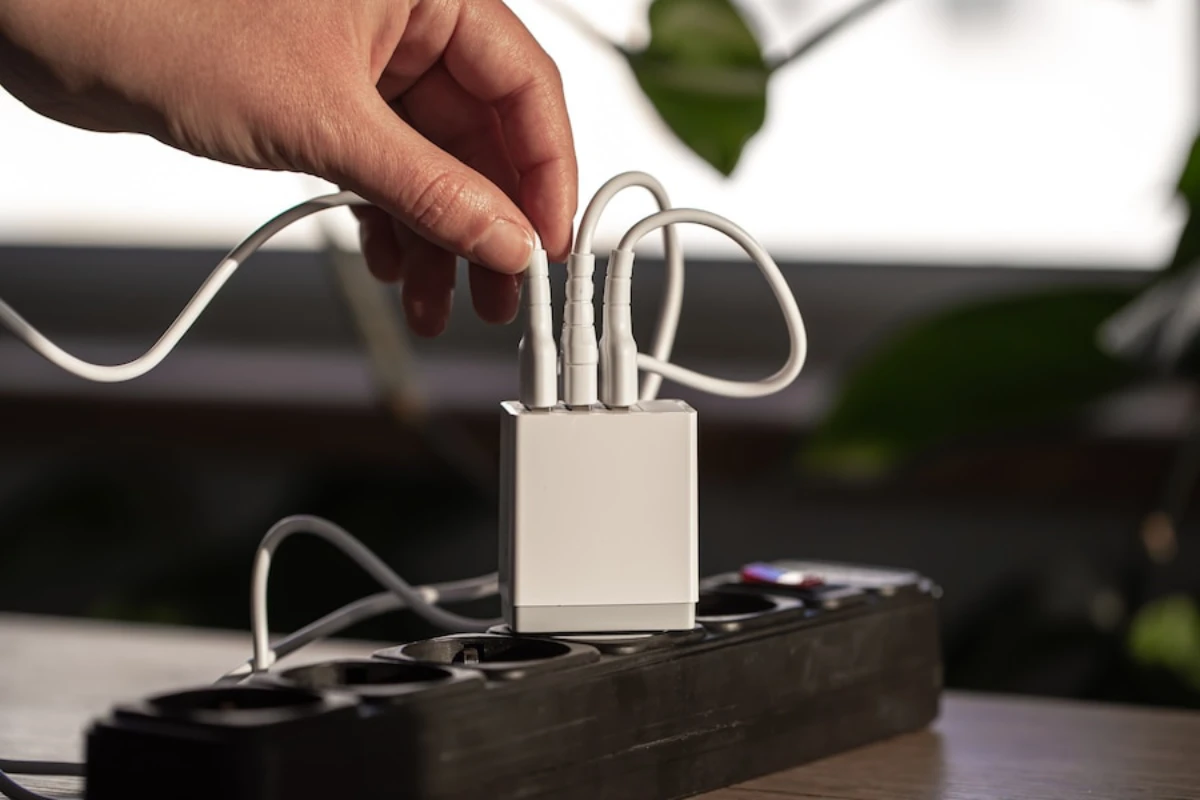The highly connected, data-driven business landscape of today requires a continuous, clean power supply to make it all happen. Downtime due to an interruption of this precious electricity is anathema, and must be avoided at all costs! Even a short period offline can be devastating for a business, causing loss of data, damage to equipment, as well as more intangible harm such as a tarnished reputation and missed opportunities. The power needs to be on, and it needs to be on all the time! Even so, accidents happen, lightning strikes, the accidental severing of power cables, grid overloads caused by inclement weather and extreme temperatures- all of which can spell disaster for an organization!
So, what can be done to prevent a potentially devastating power loss from happening? Fortunately, there is a solution in the form of an uninterrupted power supply unit, a simple, cost-effective way to keep the lights on and businesses up and running!
Often referred to as “UPS” for short, these backup systems provide desperately needed power in the event of a power loss like a utility failure. The UPS buys precious time, giving engineers and technicians a chance to power down sensitive equipment that would be damaged by an instant electricity stoppage, while also preventing data loss and minimizing the impact that a hard shutdown would have on electronic systems. Not only does a UPS protect equipment from a total power loss, but it also defends all devices connected from dangerous power surges and fluctuations in voltage that can have an adverse effect on their performance and lifespan.
To put it in the simplest terms, the UPS is a battery that provides emergency power to all the equipment and devices plugged into it via AC outlets. If the flow of electricity should fall to an inadequate amount of voltage, or in the event of a total power outage or blackout, the UPS will automatically switch over to the battery in order to maintain a continuous power source. How long this power lasts depends on the type of battery used, some being viable for just a few minutes, giving time for generators to power up and take over, to running for hours on their own.
UPS units come in a wide range of sizes and capabilities to suit a variety of needs. For example, some are built to just keep one computer operating, while others are designed to power banks of multiple servers in large data centres. The UPS keeps essential mission-critical systems up and running until the power comes back on. There are three primary types of UPS systems, standby, line-interactive, and online, with each delivering different levels of protection against unstable power situations, achieving their results in different ways:
- Standby UPS – This type is also known as offline or passive UPS, it provides the most basic level of protection by allowing all connected equipment to run directly off of grid power until it detects a problem and takes over. The transfer over to battery power takes a few milliseconds to complete when the main supply is cut off, and even though it isn’t instantaneous, it is fast enough to prevent damage to connected equipment, allowing time for controlled shutdowns. While providing some protection against minor power surges and voltage fluctuations, the standby system is the least expensive of the options and isn’t robust enough to defend highly sensitive systems from major events, therefore it is usually used for non-critical duties like office computers and local area networks.
- Line-Interactive UPS – This system is built to protect the devices connected to it from power loss, surges, and harmful voltage spikes and drops. The Line-Interactive UPS is deployed to safeguard sensitive IT applications and enterprise networks, its microprocessor monitors the quality of the incoming power ready to react to any fluctuations that should occur. The system provides a greater level of protection than the standby UPS does, with superior regulation and power conditioning to prolong the life of the battery. Another major advantage of the line-interactive UPS is its ability to compensate for under-voltage and over-voltage situations without having to fall back on battery power. While normal power conditions are in effect, the line-interactive UPS system transfers input power to the equipment connected via a voltage regulator, and a surge/noise filter while the battery is simultaneously charged for emergency use in a power supply disruption situation. If the voltage should exceed the designated safety parameters, the UPS will implement automatic voltage regulation (AVR) to adjust the output voltage to a safe level. If the input voltage stays within the acceptable range, the UPS system can regulate the output voltage without having to resort to drawing power from the battery. This is beneficial because it prevents the need to switch to the battery frequently, which draws away reserve power that is intended to be used during outages, as well as reducing the lifespan of the battery.
- Online UPS – This system delivers a continuous defence against all of the most common power problems by supplying clean, consistent power without any electrical interference despite incoming adverse conditions. This is accomplished through a sequence of AC to DC power conversions switching over to DC to AC from the UPS’s output voltage. When the grid power is erratic and the AC power drops below the predetermined tolerances of the line-interactive mode, the online UPS double conversion isolates equipment, keeping it secure from the fluctuating incoming power supply. In the event that grid power is completely lost, or exceeds rectifier tolerances, the UPS will switch over to the battery to keep everything running, until the situation becomes safe for it to convert back to high-efficiency mode. The online UPS is the best choice for critical applications and sensitive equipment, like communications hubs and data centres where clean, continuous power is essential.
If you would like to implement a UPS system for your business it might be helpful to check the Australian Government’s Standards for portable UPS devices report for more information. There are numerous benefits to implementing an array of UPS protections, not the least of which is keeping your business up and running despite any power interruptions.





